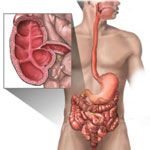Nits and head lice are a big worry for many parents with kids of preschool and primary school age. Quite often, there is a sense of shame associated with having nits or head lice. But infestation is quite common – it can and does happen to anyone. There is nothing to be ashamed of! Nits and head lice are not a serious public health problem; they are merely inconvenient and frustrating. So read on to find out how to minimise the bother.
What are head lice and what are nits?
Head lice are tiny parasitic insects that live on the scalp and feed on human blood to survive. Nits are the eggs of these lice. The adult lays one egg (nit) on the shaft of the hair where its warmth provides a perfect environment for the egg to hatch, usually within seven to 10 days of being laid.
How do I know if there is a problem?
Quite often there are no symptoms, not even itching, so it is a good idea to inspect your child’s scalp if nits are going around their school.
Nits are quite easy to find. Simply inspect the hair shafts with a strong light. You might even like to use a magnifying glass. Newly hatched eggs are usually found within 1.5cm of the scalp, while older eggs are higher up the hair shaft.
Lice are a little more difficult to find as they move quite quickly through the hair when combed. The best way to find lice is to damp the hair, then condition and comb with a fine-tooth comb. Wipe the conditioner from the comb onto a tissue and examine for lice and eggs. If you find lice, treatment should begin immediately.
What is the best treatment?
Most health professionals recommend treatment with a preparation containing chemicals such as malathion, permethrin and lindane, which are available from your local pharmacist. Treat only when eggs and/or lice are evident. Head lice treatment should not be carried out as a preventive, as this may cause a build-up of resistance to the treatment.
The majority of treatments in Australia are shampoos and lotions. Lotions tend to be more effective as they provide a higher concentration of chemicals, are not diluted by water as shampoos are, and tend to stay in the hair rather than being washed out.
How can I prevent re-infestation?
Head lice cannot jump, but are passed from one person to another via head-to-head contact or through a contaminated item such as a hat or towel. It is important to continue to check for re-infestations regularly, and to not share items that may be contaminated by head lice. Wash all contaminated clothing or objects in detergent and water to break the infestation cycle immediately.
If there is an infestation among family or friends, be sure you to let people around you know, so they too can treat the problem promptly.
Follow this advice and keep A-HEAD of nits!






Comments are closed.